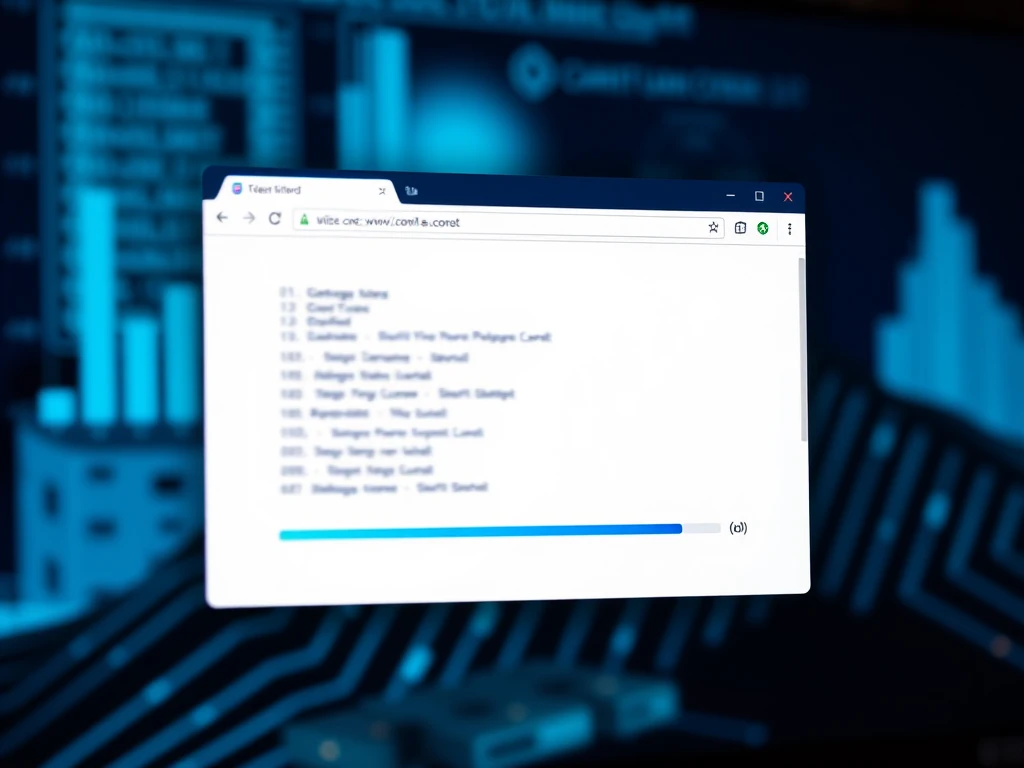Browser Crypto Mining 2025: Viable or Virtually Dead?

The idea of earning cryptocurrency just by keeping a browser tab open sounds appealing, right? No complex setups, no expensive hardware – just your computer doing the work in the background. This concept, known as browser crypto mining, gained traction years ago but faded away. Now, in 2025, it’s seeing a quiet resurgence. But is this low-barrier entry point to earning crypto still viable, or is it a relic best left in the past? Let’s explore the current state of browser-based mining.
Browser Crypto Mining: A Low-Key Comeback in 2025
After platforms like Coinhive shut down around 2019 due to profitability issues and controversy over unauthorized cryptojacking, browser mining seemed dead. However, new tools and approaches have emerged, bringing browser crypto mining back into the conversation in 2025. Platforms like CryptoTab Browser, Pi Network, and YouHolder represent this new wave, each with a slightly different model, aiming to make earning crypto accessible through standard devices.
These platforms cater to different users and coins:
- CryptoTab Browser: A Chromium-based browser integrating a mining feature, primarily focused on earning Bitcoin (BTC) through pooled hash power.
- Pi Network & YouHolder: Often blend traditional mining concepts with gamified engagement or simulation, popular on mobile devices, particularly in emerging markets.
- Monero (XMR): Remains a popular target for browser mining due to its CPU-friendly RandomX algorithm, designed to resist specialized ASIC hardware.
The audience for browser mining today includes casual users seeking passive income, newcomers to crypto avoiding initial investment, and those simply curious about earning while they browse. It lowers the entry barrier significantly, especially for individuals without access to high-end mining equipment.
Is Browser Mining Profitable in 2025?
Let’s address the key question: is browser mining profitable in 2025? For most users, the simple answer is no, at least not in a way that generates significant income. The amount of crypto earned is typically minimal, often just cents per day, even with a computer running continuously.
The primary hurdles are electricity costs and hardware strain. A mid-range device mining all day consumes power, and that electricity bill can easily exceed the value of the crypto mined. For example, electricity costs in many regions can quickly accumulate to over $10 per month, while the mining output might only be a dollar or two worth of crypto. Furthermore, continuous CPU load puts stress on your device’s components, potentially shortening its lifespan.
Compared to dedicated mining methods:
| Method | Hardware | Efficiency | Cost | Barrier to Entry |
|---|---|---|---|---|
| Browser Mining | Standard CPU | Very Low | Electricity, Hardware Wear | Low |
| GPU Mining | Graphics Cards | Medium-High | Hardware, Electricity | Medium |
| ASIC Mining | Specialized Hardware | Very High | High Hardware, Electricity | High |
| Cloud Mining | Rented Power | Variable | Subscription Fees | Medium |
Browser mining pales in comparison to the hash power generated by GPU rigs or ASICs. While cloud mining offers a hands-off approach, it involves subscription fees and risks. Browser mining, at least, only risks your personal device and electricity bill.
WebAssembly Mining and Tech Upgrades
Technological advancements are playing a role in the evolution of browser mining. WebAssembly (Wasm) is improving script efficiency, allowing browsers to execute lightweight mining code faster and with less impact on user experience. This means smoother operation compared to the clunky JavaScript miners of the past.
Platforms are also improving user interfaces and integrating features like VPNs or ad blockers to make the browser feel more valuable beyond just mining. Some decentralized finance (DeFi) projects are even exploring integrating earning opportunities, allowing users to contribute computing power while interacting with decentralized applications (DApps) within the browser.
Beyond Mining: Earning Crypto via Browser
It’s important to note that earning crypto through a browser isn’t limited to traditional mining. The Brave browser, for instance, allows users to earn Basic Attention Tokens (BAT) by opting into viewing privacy-respecting ads. This isn’t mining but offers another passive earning method through browsing.
Furthermore, the connection between browser activity and DeFi is growing. While not direct mining, interacting with DeFi protocols via a browser could potentially yield tokens through activities like yield farming or liquidity provision. Imagine a future where simply using certain DApps in your browser contributes to earning tokens.
For example, earned BAT could potentially be used in DeFi:
- Transfer BAT to a decentralized exchange (DEX) like Uniswap.
- Pair BAT with another token (e.g., ETH, USDT) to provide liquidity to a pool, receiving LP tokens.
- Stake LP tokens in a liquidity mining program to earn trading fees and governance tokens (like UNI).
- Use yield aggregators (like Yearn.finance) to automatically optimize staking for higher returns.
This demonstrates how browser-based earning (even non-mining) can potentially integrate with the broader crypto ecosystem, though risks like impermanent loss and market volatility apply.
Is Browser Crypto Mining Worth it in 2025?
So, is browser-based crypto mining dead in 2025? Not entirely, but it’s far from a mainstream or highly profitable activity. It exists primarily as a niche option for newcomers, those experimenting, or users in specific economic contexts where even small amounts of passive crypto are valuable. The profitability challenges remain significant, often outweighed by electricity costs and hardware depreciation.
While technology like WebAssembly mining is improving efficiency, and integrations with DeFi offer new possibilities, browser mining’s impact is limited compared to dedicated hardware or even other browser-based earning methods like BAT. If your goal is to learn about crypto and earn a tiny amount without investment, it serves a purpose. Otherwise, more efficient and potentially profitable avenues exist for earning cryptocurrency.









